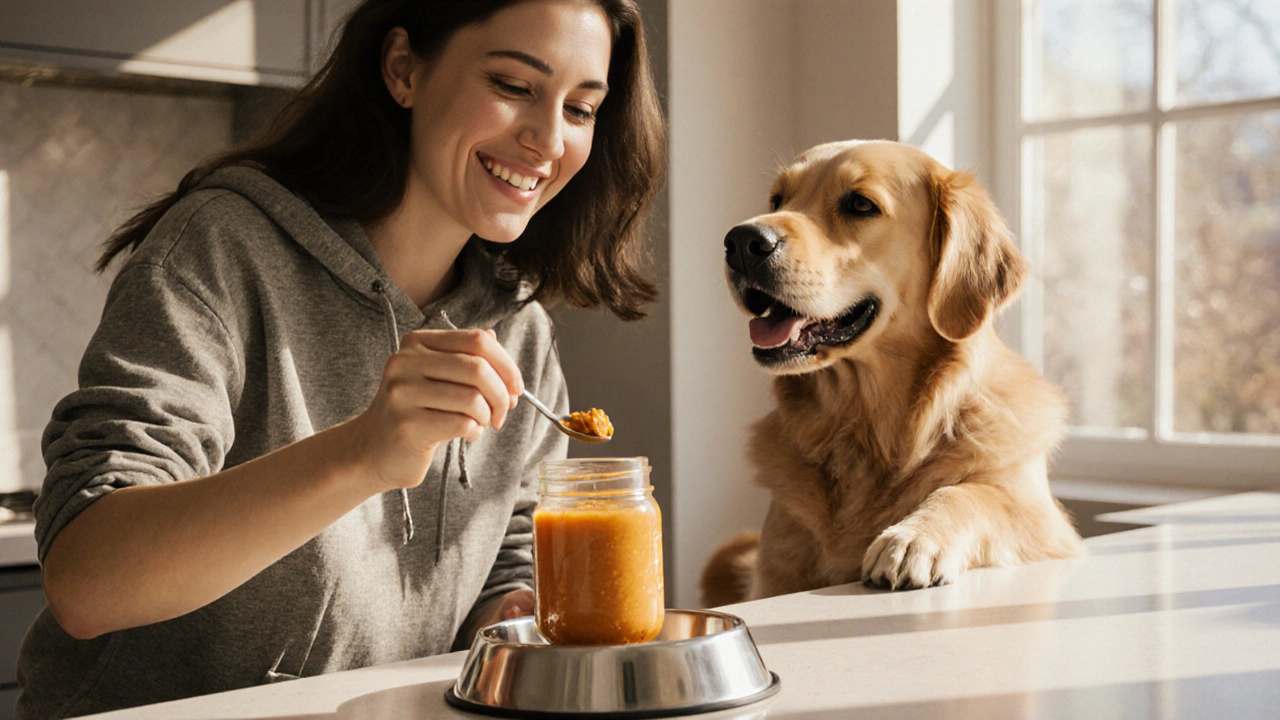Pumpkin Toxicity in Dogs – What You Need to Know
When dealing with Pumpkin toxicity in dogs, the condition that occurs after a dog eats harmful pumpkin parts such as raw seeds, unripe flesh, or excessive skin. Also known as pumpkin poisoning, it can trigger serious gastrointestinal upset and even affect other organ systems.
Why Pumpkin Turns Dangerous for Canines
The culprit is a natural compound called cucurbitacin found in the stem, skin, and seeds of pumpkin. When a dog ingests enough of this bitter toxin, it irritates the lining of the stomach and intestines. This link between pumpkin toxins and canine digestion, the process by which a dog's stomach breaks down food and absorbs nutrients is why even a small amount of raw pumpkin can cause vomiting, diarrhea, and loss of appetite. Understanding this relationship helps owners recognize that not all pumpkin products are safe – cooked, plain pumpkin puree is usually fine, but raw or seasoned pumpkin is a risk.
Beyond pumpkin, many everyday foods hide similar threats. Items like grapes, chocolate, onions, and certain nuts all belong to the broader category of toxic foods for dogs, foods that contain compounds dogs cannot metabolize safely. Each of these foods interacts with canine physiology in its own way, but the common thread is the potential to disrupt normal digestion and cause organ damage. Recognizing these foods as part of a dangerous diet roster lets you keep a safer pantry for your pet.
Spotting the signs early can make a big difference. Typical symptoms of pumpkin toxicity include sudden vomiting, watery or bloody diarrhea, abdominal pain, and sometimes lethargy. In more severe cases, dogs may develop dehydration, rapid heart rate, or even neurological signs like tremors. These symptoms are all indicators of dog health, the overall physical well‑being of a canine, especially after ingesting harmful substances being compromised. If you notice any of these changes after your dog has had pumpkin or any suspicious food, it’s time to act fast.
Prevention starts with informed feeding habits. Stick to plain, cooked pumpkin puree that contains no added sugar, spices, or salt. Offer it as a supplemental treat rather than a meal staple, and keep raw pumpkin parts out of reach. Good dog nutrition, balanced diets that meet a dog's specific energy and nutrient needs also means providing high‑quality commercial foods and limiting table scraps. By understanding which foods are safe and which are not, you reduce the chance of accidental toxicity and support a healthier digestive system.
If you suspect pumpkin toxicity, contact a veterinarian immediately. Professional veterinary care, medical services that diagnose and treat animal illnesses may involve inducing vomiting, administering activated charcoal, or providing IV fluids to combat dehydration. Early intervention can prevent the toxin from causing lasting damage. Keep your vet’s emergency number handy and be ready to describe exactly what your dog ate, how much, and when – this information speeds up treatment and improves outcomes.
Understanding how pumpkin toxicity fits into the larger picture of dog health helps you make smarter choices every day. Below you’ll find a curated set of articles that cover everything from safe feeding practices and common toxic foods to travel safety and routine vet visits. Dive in to arm yourself with practical tips and keep your four‑legged friend happy and healthy.
Posted By Bryndle Redding On 17 Oct 2025 Comments (0)
Pumpkin Side Effects in Dogs: What Every Owner Should Know
Learn the safe way to give pumpkin to dogs, spot side effects, and know which pets need extra caution. A practical guide for pet owners.
READ MORE